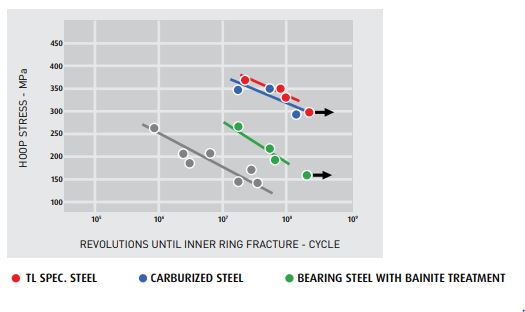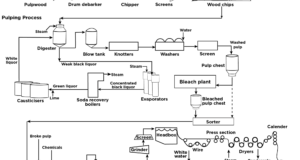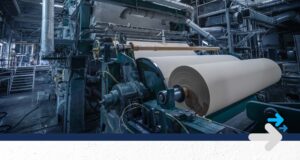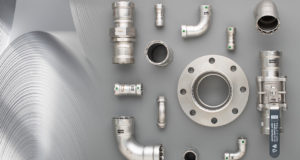SPONSORED CONTENT FROM NSK Americas
In any application the environment in which it operates can greatly affect the performance and life of a bearing. Continued research and development on materials, lubrication, and sealing options have significantly improved the life of bearings in many applications, including that of the dryer cans, press and calendar sections in paper mills.
Research engineers at NSK Americas have developed steel called “TL” Tough and Long Life steel. It delivers better performance in a variety of applications where inner ring fractures commonly occur; it also achieves this at a lower cost compared to other premium bearing materials.
This technology can specifically be used in paper mill applications, where high temperature steam passes through the hollow shaft of the dryer journal, through the center of the bearing. The journal expands faster than the bearing, making the fit tighter. Severe hoop stress on inner ring can occur every time the machine is started resulting in potential fractures.

Steam temperature increases in the manufacturing process have improved high speed operation, dryer efficiency, and paper quality over the years. These gains have come at the expense of bearing life by creating even more stressful conditions causing more inner ring fractures. It’s for these reasons that additional development is needed for bearings. Bearings continually need to adapt to the changes in manufacturing processes in which they are used.
Some paper mills try to minimize the risk of failure using a slow start-up procedure that builds up heat slowly and transfers it more evenly through the bearing. The slower process helps minimize damage that may occur from thermal shock. In addition mills have also tried to pre-heat the circulating oil that lubricates the bearings. Although these methods can prolong bearing life, they require several hours of lost production and lost revenue. For this reason some mills don’t invest the time to take these extra steps and may simply be taking their chances at an inner ring bearing fracture.
Since the focus then goes back to the bearing quality, some bearing manufacturers have tried to address the inner ring fracture problem by developing special steels. Unfortunately, these changes can often sacrifice the performance characteristics. One example is bainitic steel, created with a process called austempering. Bainitic steel does offer higher fracture strength but it lowers hardness, thereby decreasing overall bearing life.
Other manufacturers have recommended carburized grade steels for the inner rings. The carburized process is a heat-treating method that uses a furnace with a carbon-rich atmosphere to diffuse carbon into the steel at the surface. This process takes a lot of time, consumes a lot of energy and can result in a premium-priced bearing. Many mills do not want to absorb the high costs of this carburized product.
In contrast, NSK’s TL steel can satisfy the high demands of these applications and can be incorporated in a standard specification. With TL Tough and Long life steel, the inner-ring fracture strength outperforms bainitic steel, equals that of carburized steel inner rings, without sacrifice to inner-ring hardness, so that bearing life is not compromised.
The development of TL has been able to offer many benefits including greater resistance to hoop stress which will reduce fracturing of bearing inner ring. Without fractures, downtime is reduced along with associated maintenance costs. The increase in performance leads to service life that is extended to more than twice that of conventional bearings operating under contaminated conditions. Tests show fracture resistance is higher than stress levels in other steels, up to 50% higher than bainite steel and 50% higher than through hardened steel.
With TL, dimensional stability is equal to or better than standard heat stabilized (S11/200°C) bearings. TL Fatigue life is 2 times that of carburized steel and 3.5 times bainite, in contaminated lube testing.
In order to achieve all of this, the TL steel bearings increase inner-ring toughness using a special surface-hardening heat treatment. From a metallurgical standpoint, the raceways are harder than conventional bearing steel but the tough core remains softer than the raceway. This delivers the shock resistance needed to prevent fracturing, as well as the desired raceway hardness for long bearing life.
To evaluate TL steel’s fracture resistance, NSK had to develop special “benchmark” tests to compare its bearing materials to that of competitors. The inner ring fracture strength test involves creating a pre-crack on the inner-ring of a bearing, and then mounting it on a test shaft to a prescribed interference fit. A load was then applied during a running test until the stress causes the pre-crack to expand. “Cracking life” in this test equals the total number of revolutions of the inner ring until fracture occurs. In NSK lab testing, the TL steel features about three times the cracking life compare NSK’s conventional bearings.

This technology is especially beneficial in spherical roller bearings with tapered bores that are prone to inner ring fractures from being over tightened, particularly when mounted using hydraulic assist.
For additional bearing failures and countermeasures please reference the bearing damage examples below:

When mill efficiently is crucial, selecting components that offer the best performance, life and longevity in the application will help give mills the most output while maintaining uptime.
 Paper 360
Paper 360


